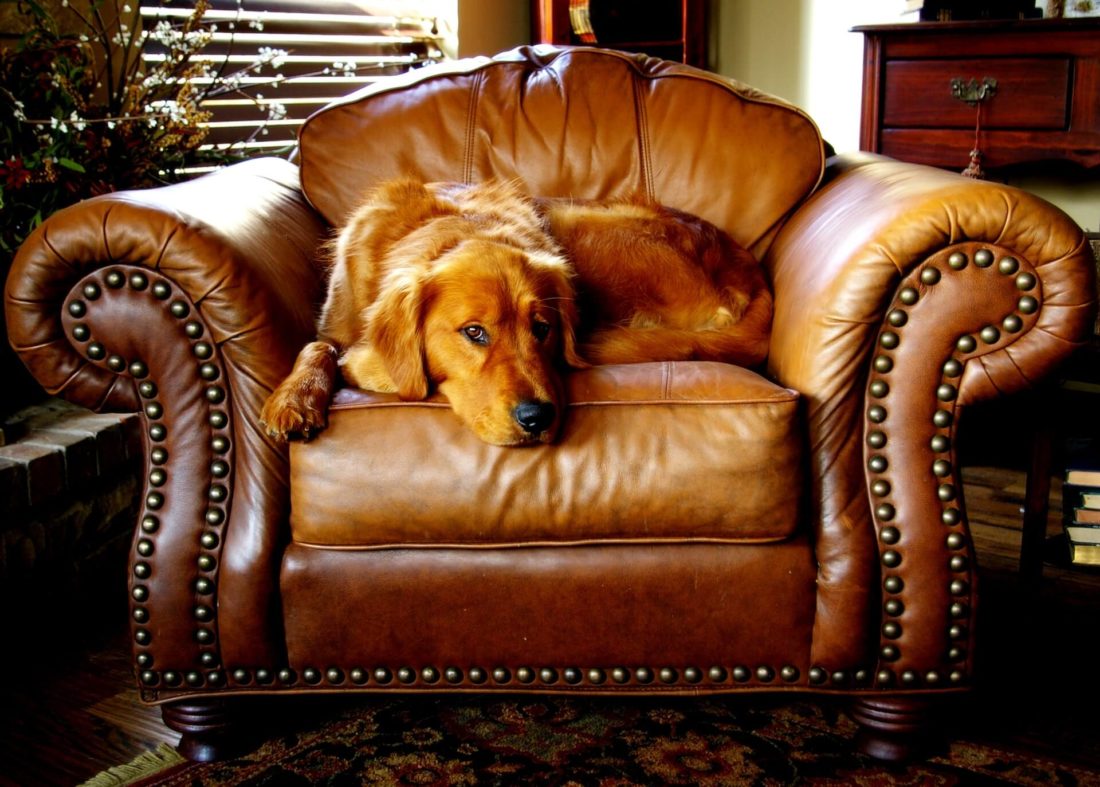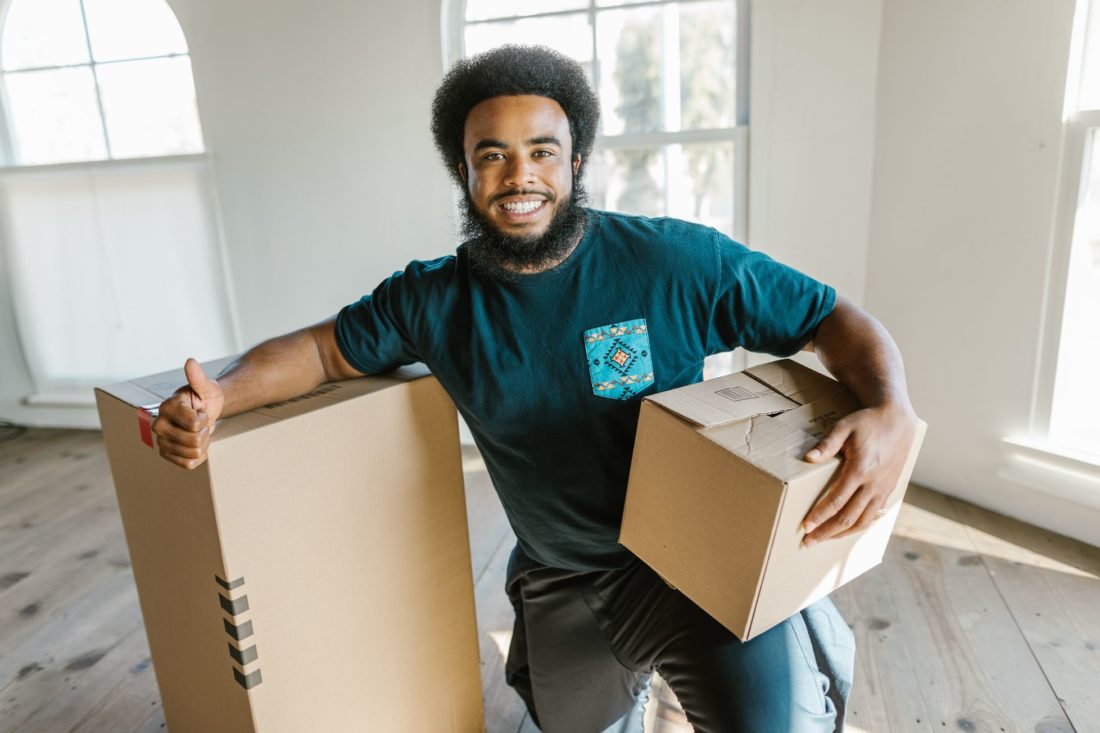Chairs have a storied history, tracing back to Ancient Egypt and gaining prominence across the Western world from the eras of the Greeks and Romans. Today, modern homes boast different types of chairs. However, when it comes to relocating, some might not know how to pack a chair for shipping. Our ultimate guide is here to turn you into a packing guru, perfect for both newbies and DIY aficionados who want to prepare for the arrival of long-distance movers.


How to Pack a Chair for Shipping
Packing a chair for shipping requires attention to detail to ensure that the cherished piece of furniture can move safely, especially if you’re relocating for the first time. Disassemble any removable parts, such as arms, legs, and cushions, to make them more manageable. Clean each part thoroughly to prevent dirt from causing damage.
Next, use secure wrapping techniques for shipping, using bubble wrap and packing paper to protect every component. Wrap the legs individually and cushion the arms and back to safeguard against knocks and bumps. Finally, select a sturdy box that fits the chair or its parts snugly, filling any empty spaces with packing peanuts or crumpled paper to prevent movement. By following these steps, each piece will be ready to grace your new home.
Determine What Type of Chairs You Own and Their Packing Needs
Each category of chair on the relocation checklist, from office chairs to lounge chairs, dining chairs, and beyond, presents unique challenges that require tailored packaging strategies.
For instance, office chairs often come with multiple moving parts and may need to be disassembled for safer transport.
When it comes to the question of how to pack a gaming chair, special consideration must be given to electronic integrations and adjustable features. Packaging furniture pieces with their specific needs in mind ensures they’re properly protected. Here’s a quick guide to help you identify and address the needs of various chair types:
- Office chairs – Disassemble adjustable components and secure wheels. Wrap arms and base separately to prevent damage.
- Lounge chairs – Employ additional padding for upholstery protection. Disassemble if the size is cumbersome, wrapping each part individually.
- Dining chairs – Use protective coverings for fabric seats to shield against spills and stains.
- Gaming chairs – Secure and wrap movable parts separately to avoid loss or damage.


Obtain Essential Packing Materials and Tools
The packing materials you choose can make a significant difference in preventing damage and ensuring your items arrive safely at their destination. From sturdy boxes to protective wraps, selecting high-quality materials is an investment in the safety of your furniture. It’s not just about wrapping. It’s about cushioning, securing, and shielding the chairs from the rigors of relocation. Here’s a list of necessary materials for packaging chairs:
- Bubble wrap,
- Packaging paper,
- Stretch wrap,
- Furniture blankets,
- Strong tape,
- Corrugated cardboard sheets,
- Plastic bags (for small parts and hardware),
- Sturdy boxes (of various sizes, depending on the chair’s dimensions).
Choose the Appropriate Tools for the Job
Having the right tools at your disposal can greatly enhance your ability to pack efficiently and experience less relocation stress. Quality tools make everything quicker, safer, and more effective.
A sharp box cutter is essential for customizing box sizes and cutting wrapping materials to size. Tape guns help in applying tape securely and evenly, ensuring boxes are well-sealed. Scissors are versatile and necessary for cutting paper, bubble wrap, and opening packages of supplies.
Additionally, a marker for labeling boxes and a measuring tape to assess furniture dimensions and box sizes are indispensable in organizing and preparing for a move. Choosing high-quality, durable tools can make a significant difference, turning a potentially chaotic process into a manageable task.
Follow the Step-By-Step Guide to Packing a Chair for Shipping
This guide aims to demystify the process, offering insights into effective packaging techniques that not only learn how to protect chairs during transit but also make relocation easier. Here you’ll find details regarding the essential things to do before moving. With that knowledge, you can approach the task with confidence, and the items will arrive in impeccable condition.
Prepare the Chair for Packing
This step entails removing any detachable elements such as armrests, legs, and cushions, significantly reducing their bulk. A thorough move-out cleaning follows, eliminating dust and debris that could cause scratches or other damage.
Disassembling these items as much as possible not only makes them easier to pack but also helps improve the future home with favorite pieces. They will continue to add comfort and style to new spaces. This preparatory phase lays the groundwork for a smooth packaging experience.


Use Wrapping Techniques for Maximum Protection
Each piece, especially those with unique designs like office seats or dining sets, requires specific attention to guarantee their safety. The key is to concentrate on the most vulnerable parts, such as armrests, backrests, and any ornamental elements.
Using a combination of bubble wrap and paper, wrap these areas thoroughly to shield them from impacts and scratches. For chairs with intricate details or fragile components, additional layers of protection are advisable to maintain their integrity. A stress-free relocation hinges on the careful wrapping of each part of the item.
Protect the Legs With Bubble Wrap
Securing the extremities of furniture, akin to the procedure followed when relocating a heavy desk, demands special care and the right materials. Bubble wrap stands out as one of the most effective and cheap relocation supplies for this task. Each leg should be individually wrapped with a generous layer of bubble wrap, ensuring complete coverage from top to bottom.
Secure the wrap with tape, but take care not to apply the tape directly to the surface to avoid damage to the finish. This method not only provides a cushion against shocks and bumps but also prevents any scuffing that might occur during the journey.
Secure Any Vulnerable Spots
Areas particularly at risk include legs, delicate woodwork, and any ornate details that protrude or are inherently fragile. To reinforce these spots, start by wrapping them with additional layers of foam padding or bubble wrap, offering a cushion against impacts. Corrugated corner protectors are invaluable for shielding corners and edges from dings and scratches.
For pieces with significant value or historical importance, surrounding them with moving blankets adds a further layer of defense. This careful attention to detail ensures that every piece arrives in top condition, minimizing the risk of damage. In cases where an item is too delicate, repurposing old furniture is a wise consideration.
Place the Elements in a Cardboard Box
When it comes to best practices for packing large items, choosing the right box size and securing the contents properly are key steps. The box should comfortably accommodate the disassembled elements without forcing them in, allowing for adequate cushioning. Line the bottom of the box with a layer of packaging peanuts to create a protective base.
As you place each element inside, fill gaps with additional cushioning materials such as crumpled paper or foam padding. This not only prevents the pieces from shifting but also absorbs any external shocks. Once everything is packed, seal the box with strong packing tape.


Handle Vintage and Antique Chairs With Extra Care
Special considerations for these high-value items include using acid-free packing paper to avoid damage to delicate finishes and employing custom-built crates for the utmost protection. For those rare pieces, requesting a custom crating service from cross-country movers is a prudent option.
This guarantees that the items are not only protected by tailored packaging but also handled with the utmost care. Additional tips for safe handling include marking the crates as fragile. They will be loaded onto the moving truck in a position that minimizes movement.
Leave Oversized or Unusually Shaped Chairs For Mover to Pack
Choosing a long-distance moving company that offers both full and partial packing services can be a game-changer. Reliable movers are highly rated on the Better Business Bureau website. These professionals have the experience, materials, and skills necessary to handle unique challenges. Every piece, regardless of its shape or size, will be packed with precision.
Opting for such specialized services not only guarantees the safety of your items but also provides peace of mind. Knowing that your most challenging pieces are in expert hands allows for a smoother relocation experience. It highlights the value of selecting a moving company equipped to offer custom packing solutions. One such company is Long Distance USA Movers, which places customer satisfaction at the heart of its cross-country moving services.


Common Packing and Shipping Mistakes to Avoid
When learning how to pack an office chair for shipping, it’s easy to fall into common traps that can lead to damage. Avoiding these pitfalls can make the difference between a chair that arrives in perfect condition and one that doesn’t. Here are some crucial mistakes to steer clear of:
- Not disassembling the chair – Failing to take apart removable parts can lead to unnecessary bulk and potential damage.
- Insufficient padding – Skimping on bubble wrap or padding, especially around fragile areas.
- Using the wrong box size – Choosing a box that’s too big or too small can cause the chair to move during shipping, leading to damage.
- Forgetting to label boxes – Not marking the boxes as fragile can lead to mishandling by carriers.
Don’t Overlook Structural Weaknesses
Areas that bear the most weight or are inherently fragile need to be reinforced to withstand the stresses of transit. For instance, if a chair has a weak joint or a crack, using a stabilizing agent or a splint can prevent further damage. Additionally, applying extra padding or support to these areas can absorb impacts that might otherwise exacerbate the weakness.
Moving Services
Treat yourself with a white glove long distance moving service that’s based on the inventory list and not weight. This means a price guarantee, transparent move costs and premium moving service.
Learn morePacking Service
Sit back and relax, we’ve got packing services covered. We use moving blankets, shrink wrap, bubble wrap and even custom wooden crating. Your stuff will be protected and carefully handled during the move.
Learn moreAuto Transport
Move your car across the country in an open or enclosed trailer – for an affordable fee. We offer car transport as a standalone service, but you can bundle it with your household move and get a hefty discount.
Learn moreWant Professionals to Box up Your Household? Call Long Distance USA Movers
In wrapping up our guide filled with essential furniture shipping tips, we’ve navigated through the intricacies of preparing, packing, and securing chairs. We’ve emphasized the care required for vintage and antique pieces and the strategy for handling oversized or unusually shaped items.
If the prospect of tackling this task seems daunting, or if you’re seeking professional expertise for long-distance moving services, Long Distance USA Movers company is your go-to source. Our team of long-distance movers specializes in providing comprehensive solutions tailored to meet your relocation needs. We invite you to contact us, Long Distance USA Movers, for a seamless experience. Let our experts handle the complexities of packing and transporting your furniture.
Frequently Asked Questions
How Much Packing Material Do I Need for a Chair?
Estimating the right amount of materials begins with assessing the item’s dimensions and fragility. A general rule is to have enough supplies so that all parts can be wrapped multiple times for cushioning. The volume needed varies, influenced by the item’s size and the journey’s length.
Can I Ship a Chair Without Disassembling It?
Shipping items intact is feasible for short distances or when size permits easy handling. However, disassembly may be required to navigate tight spaces or for long-haul transit. Careful consideration of the item’s structure and transport conditions is crucial.
What Is the Best Way to Protect the Legs of a Chair During Shipping?
Securing extremities effectively demands using bubble wrap and stretch film for comprehensive coverage. Special attention to wrapping each leg individually ensures maximum protection against impacts. Employing additional padding around these parts can mitigate the risks of transit.
How Do I Choose the Right Size Box for Shipping a Chair?
Selecting an appropriate box involves matching the item’s dimensions closely to avoid excess space that could lead to shifts. A snug fit, complemented by internal cushioning, provides stability. Make sure the container is slightly larger than the item allows for protective materials.
What Should I Do if My Chair Is Too Large to Fit in a Standard Shipping Box?
For items exceeding standard sizes, exploring custom crating or splitting the item into manageable parts is advisable. Consulting with professional cross-country movers can offer solutions tailored to specific needs. Custom solutions not only accommodate size but also provide tailored protection for unique shapes.







